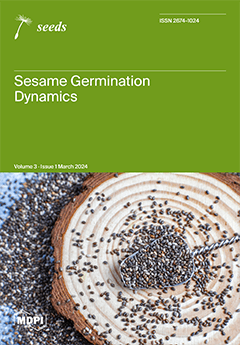Annona fruit, leaves, seeds, roots, and bark have been conventionally used in many countries for medical treatments as they are considered ideal sources of pharmacologically active compounds, but Annona remains an underutilized fruit in many countries. The fruit of these plants is delicately
[...] Read more.
Annona fruit, leaves, seeds, roots, and bark have been conventionally used in many countries for medical treatments as they are considered ideal sources of pharmacologically active compounds, but Annona remains an underutilized fruit in many countries. The fruit of these plants is delicately flavored and is used in industrial products such as ready-to-serve beverages, wine, jellies, jam, and fruit-butter preserve, while the seeds generally go to waste. Annona seed oil contains numerous health-benefiting factors such as vitamins, minerals, bioactive compounds, fatty acids, antioxidants, and phenolic compounds, which are responsible for various biological activities, including antibacterial, antioxidant, and antitumor activities. Cancer is a worldwide major health problem that remains unresolved. Even though the current treatments can manage to reduce tumor growth, there is an urgent need to investigate more efficient but less expensive novel techniques to overcome some of the restrictions in treating tumors. Annona might offer an indispensable choice besides chemotherapy and radiotherapy, especially for terminally ill patients, as the Annona genus contains secondary metabolites in nearly every component of Annona plants. Research has shown that many
Annona species contain promising components that could potentially exhibit anticancer activity, but the information available is scarce and inconsistent.
Annona muricata (Soursop, “Katuanoda”),
Annona squamosa (Sweetsop, “Seenianoda”), and
Annona reticulata (Custard apple, “Welianoda”) are three commonly cultivated edible
Annona species in Sri Lanka. The main objective of the review was to present an updated comprehensive literature analysis of the putative chemopreventive functions against cancer cell lines/the anticancer effect on cancers, phytochemical properties, and antioxidant properties possessed by the seed oils of three selected common
Annona species. Although there are some in vitro and in vivo experimental investigations supporting the benefits of Annona seed oils, clinical investigations are still needed to explore concealed areas, determine the effects on the human body, determine the safest concentration, and determine health-contributing benefits before they are submitted to clinical trials.
Full article



